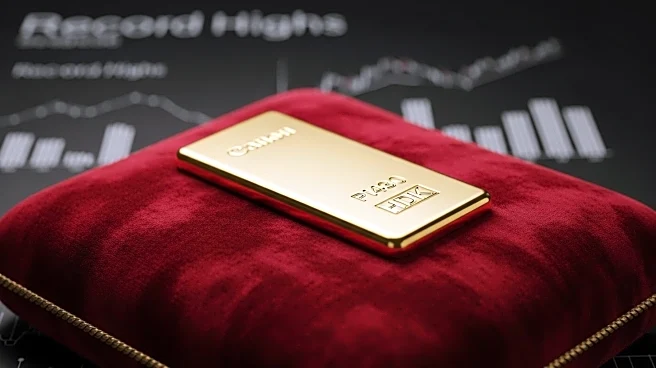What is the story about?
What's Happening?
Gold prices have surged to a record high, driven by expectations of an imminent interest rate cut by the Federal Reserve. Spot gold rose to $3,643.57 per ounce, while U.S. gold futures for December delivery settled at $3,682.2. The rally is fueled by a 92% chance of a 25-basis-point rate cut next week, with some traders anticipating a larger 50-basis-point reduction. This follows recent data indicating weakened U.S. job growth in August, which has increased the appeal of non-yielding bullion as lower interest rates pressure the dollar and bond yields. Investors are now focused on upcoming U.S. inflation data for further cues on monetary policy.
Why It's Important?
The record high in gold prices underscores the market's response to potential shifts in U.S. monetary policy. Lower interest rates typically enhance the attractiveness of gold as a safe-haven asset, impacting investment strategies and portfolio allocations. This trend reflects broader economic uncertainties, including trade relations and geopolitical tensions, which continue to drive demand for gold. The anticipated rate cuts could also influence currency markets, affecting the dollar's strength and global trade dynamics. Stakeholders in the financial sector, including investors and policymakers, must consider these factors as they assess economic conditions and adjust strategies accordingly.
What's Next?
Investors will closely watch the release of U.S. producer and consumer price data for insights into inflation trends and the Federal Reserve's policy decisions. The outcome of these reports could further influence gold prices and market expectations. Additionally, any changes in geopolitical or trade relations could impact the demand for gold as a hedge against economic instability. Market participants will need to stay informed and agile in response to these developments.
AI Generated Content
Do you find this article useful?














